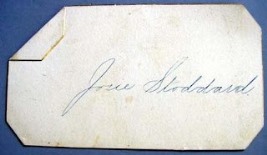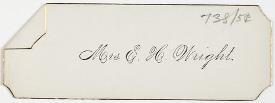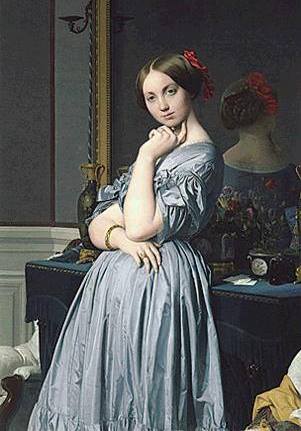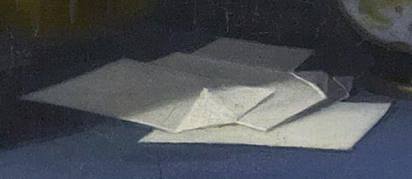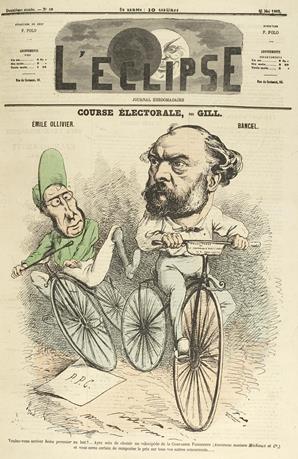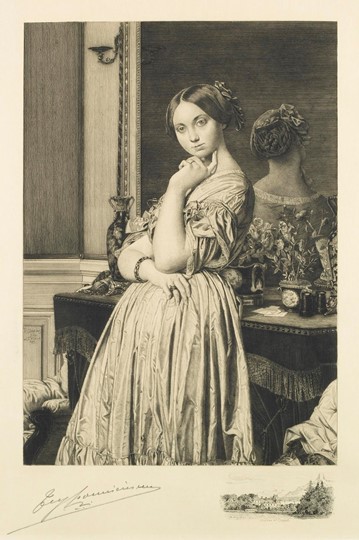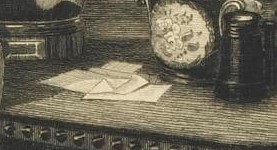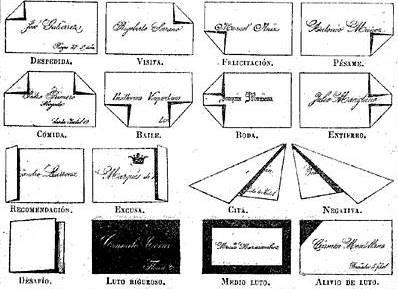| The Public Paperfolding History Project
Last updated 2/4/2024 x |
|||||||
| The Folding of Visiting / Calling Cards | |||||||
| This
page is being used to collect information about the
history of the folding of visiting or calling cards.
Please contact me if you know any of this information is
incorrect or if you have any other information that
should be added. Thank you. According to Wikipedia ( ) 'A visiting card, also known as a calling card, is a small card used for social purposes. Before the 18th century, visitors making social calls left handwritten notes at the home of friends who were not at home. By the 1760s, the upper classes in France and Italy were leaving printed visiting cards decorated with images on one side and a blank space for hand-writing a note on the other. The style quickly spread across Europe and to the United States.' The oldest reference to visiting cards that I know of comes from 'Il Cavaliere Giocondo' a theatrical opera in five acts by Carlo Goldoni written in 1755. In Act 1, Scene 1 the Cavaliere says: 'A vivere ho imparato / Son divenuto un altro, dopo d'aver viaggiato / Partendo da Bologna , facendo a lei ritorno / In visite una volta spendeva tutto il giorno / Ora con i biglietti supplisco ad ogni impegno / Ah i Francesi, i Francesi, hanno il gran bell'ingegno!' which translates as 'To live I learned / I became another after traveling / Leaving from Bologna , returning to her / In visits I once spent the whole day / Now with visiting cards I make up for every commitment / Ah, the French, the French, have great genius!' which implies that Goldoni believed that visiting cards were a French invention. Visiting cards provided a simple way of informing acquaintances that you were going out of town, or had arrived back in town and were thus available for invitation to balls, soirees etc. The etiquette associated with the leaving of visiting cards also served as a means of ensuring that members of 'high society' could protect themselves against exposure to social climbers and other unsuitable persons. The common system appears to have been that if you wanted to visit or become acquainted with someone you did not otherwise know you first left your visiting card with a servant at their home. The recipient could then decide whether to encourage or discourage a personal visit. So, for instance in Jane Austen's 'Northanger Abbey', written in 1803 but not published until 1817, Catherine Morland calls on Miss Tilney but is not admitted. 'She reached the house without any impediment, looked at the number and inquired for Miss Tilney. The man believed Miss Tilney to be at home, but was not quite certain. Would she be pleased to send up her name? She gave her card. In a few minutes, the servant returned, and with a look which did not quite confirm his words, said he had been mistaken, for she was walked out.' In Sense and Sensibility, published in 1811, Jane Austen wrote 'the morning was chiefly spent in leaving cards at the houses of Mrs. Jennings’s acquaintance to inform them of her being in town.' At some point, probably in the early to mid 19th Century, the habit developed of folding over one corner of a visiting card to show that you had delivered it in person rather than had it delivered by a servant. Many cards folded in this way have survived. It is worth noting, however, that this practice was not universal.
At various times and in various places the folding of the corners, and the edges, of visiting cards developed into a code that could express much more than simply that a personal visit had been made. The details of this code seem to have varied from place to place and time to time. ********** 1845 Juan Gimeno's sharp eyes have spotted that visiting cards with their corners folded in are shown in a painting of the Countess of Haussonville by Jean-Auguste-Dominique Ingres which can be dated to 1845. Two of the cards have either their top right or bottom left corners folded over and one card has either the top left or bottom right corner folded over. The painter does not appear to have included any text on the face of the cards which would allow us to decide between these possibilities.
********** 1869 The front cover of the French satirical magazine L'Eclipse of 16th May 1869 includes a drawing of a visiting card with one corner folded over and marked with the letters 'PPC' for 'Pour Prendre Conge' meaning that the person who left the card was 'taking their leave' of society for a while.
********** 1889 An etching made from the painting of the Countess of Haussonville by Jean-Auguste-Dominique Ingres (shown above) by Pierre Salvy Frédéric Teyssonnières in 1889 also shows the visiting cards, although in this instance only the corner of the top card has been folded over.
********** 1873 'The Gilded Age', a book written jointly by Mark Twain and Charles Dudley Warner, which was published in 1873, contains a detailed description of the etiquette of visits and calling cards pertaining at that time in Washington, DC. 'There were certain important "society" customs which one in Laura's position needed to understand. For instance, when a lady of any prominence comes to one of our cities and takes up her residence, all the ladies of her grade favor her in turn with an initial call, giving their cards to the servant at the door by way of introduction. They come singly, sometimes; sometimes in couples; and always in elaborate full dress. They talk two minutes and a quarter and then go. If the lady receiving the call desires a further acquaintance, she must return the visit within two weeks; to neglect it beyond that time means "let the matter drop." But if she does return the visit within two weeks, it then becomes the other party's privilege to continue the acquaintance or drop it. She signifies her willingness to continue it by calling again any time within twelve-months; after that, if the parties go on calling upon each other once a year, in our large cities, that is sufficient, and the acquaintanceship holds good. The thing goes along smoothly, now. The annual visits are made and returned with peaceful regularity and bland satisfaction, although it is not necessary that the two ladies shall actually see each other oftener than once every few years. Their cards preserve the intimacy and keep the acquaintanceship intact. For instance, Mrs. A. pays her annual visit, sits in her carriage and sends in her card with the lower right hand corner turned down, which signifies that she has "called in person;" Mrs. B: sends down word that she is "engaged" or "wishes to be excused"--or if she is a Parvenu and low-bred, she perhaps sends word that she is "not at home." Very good; Mrs. A. drives, on happy and content. If Mrs. A.'s daughter marries, or a child is born to the family, Mrs. B. calls, sends in her card with the upper left hand corner turned down, and then goes along about her affairs--for that inverted corner means "Congratulations." If Mrs. B.'s husband falls downstairs and breaks his neck, Mrs. A. calls, leaves her card with the upper right hand corner turned down, and then takes her departure; this corner means "Condolence." It is very necessary to get the corners right, else one may unintentionally condole with a friend on a wedding or congratulate her upon a funeral.' ********** 1896 In a section of her book 'Social Life' or 'The Manners and Customs of Polite Society', published in Buffalo, New York by The Matthews-Northrup Co in 1896, entitled 'Turning Down the Corners', Maud C Cooke writes: 'This custom is almost out of date, and in consequence of the various interpretations liable to be given to the act, its disuse is a satisfaction to all parties concerned. To briefly explain the custom, a card turned down at the corner, or across one end, signifies that the call was made in person, and is sometimes very convenient when one wishes it distinctly understood that the card was brought in person, not sent; while one folded through the center denotes that the call includes all members of the family. A man should not turn down the corners of his cards. Minor interpretations, such as which end or which corner is to be turned down on different occasions, even the surviving adherents of the custom do not pretend to agree upon.' ********** Some cards appear to have been especially designed with a corner folding code in mind. In the online article 'Calling Cards and the Etiquette of Paying Calls' by Michelle Hoppe, which can be found at www.literary-liaisons.com/article026.html the author states: 'Some elaborate cards had the words Visite, Felicitation, Affaires, and Adieu imprinted on the reverse side, on the corners. So whichever corner was turned up, one of those corners appeared and explained the reason for the visit.' No location or date for this practice is given and so far I have not been able to locate an image of this type of visiting card. ********** 1928 The entry for visiting cards (tarjeta) in the Diccionnario Enciclopedio Universal ESPASA - CALPE, published in 1928, is accompanied by an illustration of an extensive folding code. Unfortunately no information about the origin or history of this code is provided. (Information from Juan Gimeno.)
********** There is also a late reference from England to the practice of folding visiting cards in part 3, chapter 7of the novel 'Decline and Fall' by Evelyn Waugh, which was published in 1928.
********** |
|||||||
